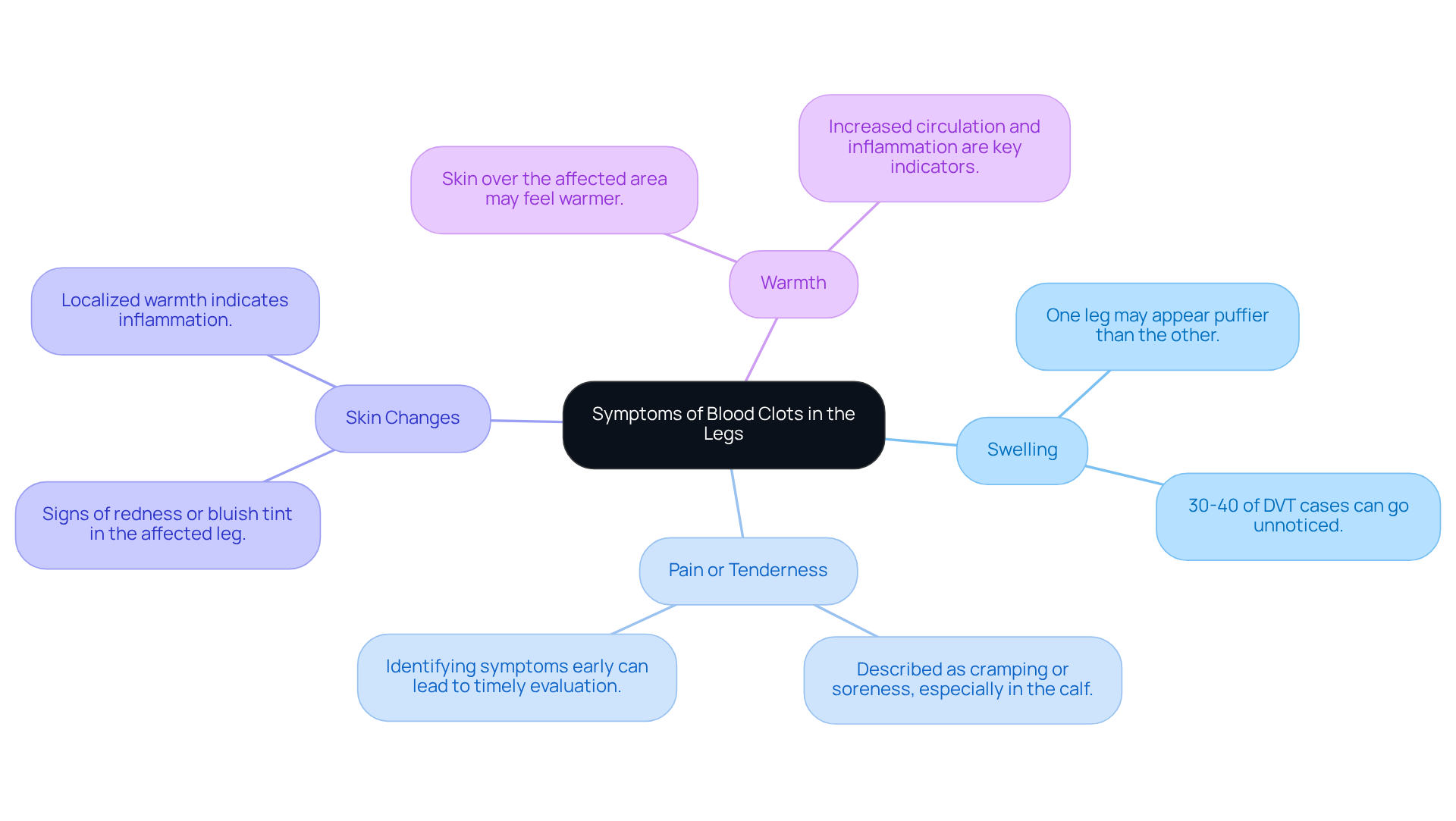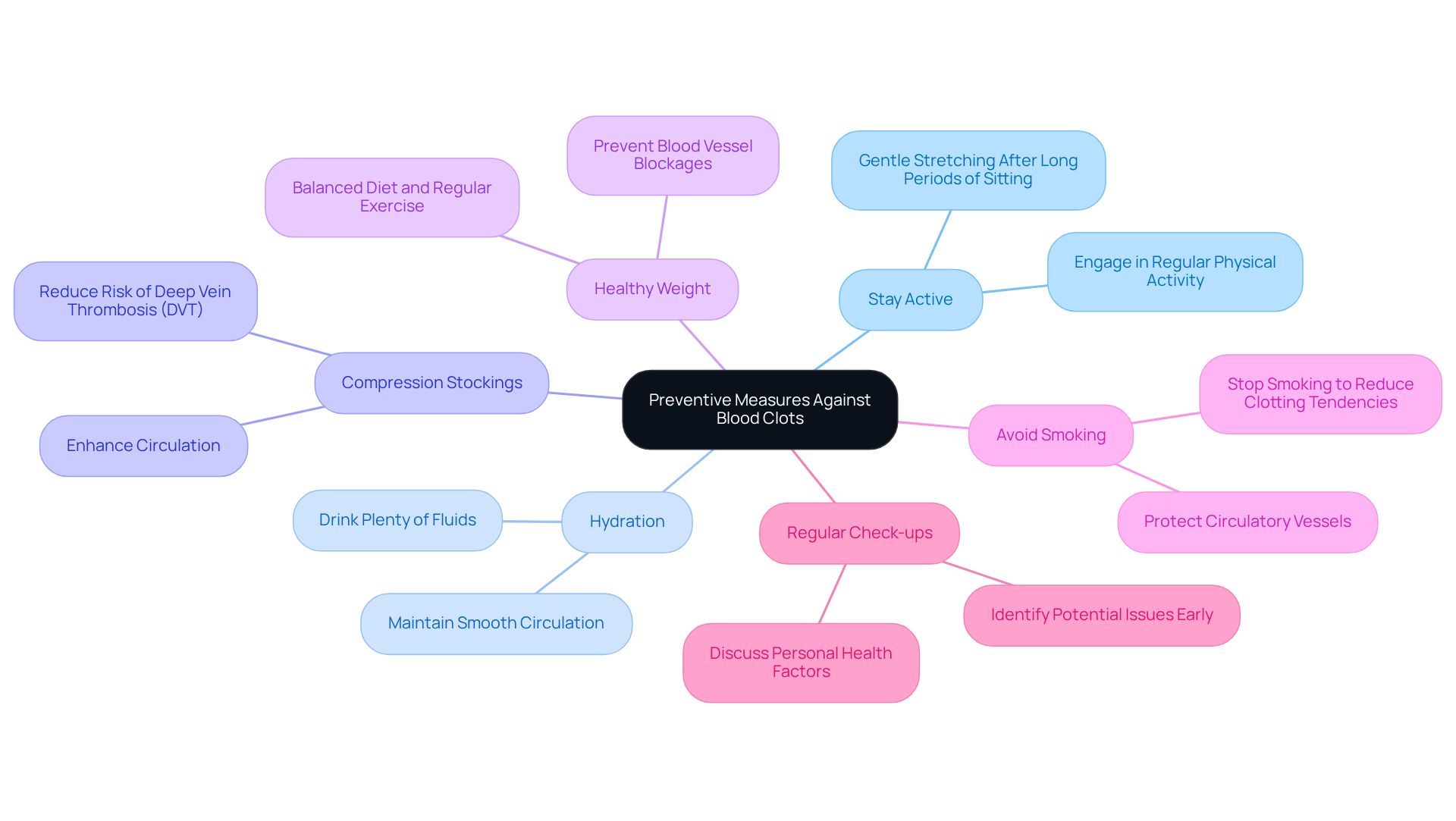


Understanding effective treatment for blood clots in the legs is essential for your health and peace of mind. It involves recognizing the types of clots, being aware of symptoms, and exploring various treatment options available to you. It’s important to pay attention to signs like swelling and pain, as timely medical attention can make a significant difference. Lifestyle changes, along with medical interventions, can greatly reduce the risk of serious complications, such as pulmonary embolism.
In addition to understanding these aspects, consider how you can take proactive steps towards your health. Implementing preventive measures can empower you and provide reassurance. Remember, you are not alone in this journey; seeking help and support is a vital part of managing your health. Together, we can work towards reducing your risks and enhancing your well-being.
Understanding blood clots is crucial, especially when nearly 900,000 individuals in the United States are affected each year. These clots can lead to serious complications such as deep vein thrombosis (DVT) and pulmonary embolism. This article gently explores effective strategies for recognizing symptoms, implementing preventive measures, and considering treatment options for blood clots in the legs. We aim to provide valuable insights for anyone concerned about their vascular health.
How can you empower yourself to take proactive steps in managing your risk and ensuring timely treatment? Remember, you are not alone in this journey.
Thrombi are gel-like masses formed by the coagulation of bodily fluids, and they can develop in both veins and arteries. Understanding the two main types of is essential for recognizing symptoms and seeking timely treatment, especially for those who may feel anxious about their health.
Blood clots treatment legs is essential for addressing venous clots that typically develop in the deep veins, a condition known as Deep Vein Thrombosis (DVT). If a venous clot dislodges, it can travel to the lungs, resulting in a potentially life-threatening pulmonary embolism. It's concerning to note that up to 900,000 individuals in the United States are affected by venous thromboembolism (VTE) annually, making it a leading cause of preventable hospital death. Moreover, one third to one half of people who have had a DVT will experience long-term complications such as swelling and pain. Chronic Venous Insufficiency (CVI) can worsen these symptoms, as the valves in leg veins fail to function properly, leading to blood pooling, skin changes, and visible varicose veins. At Amavita Heart and Vascular Health, we offer several minimally invasive treatments, including venous ablation, Varithena treatment, and sclerotherapy, for blood clots treatment legs, to effectively address these issues with minimal downtime, ensuring you receive the care you deserve.
Arterial Thrombi: These formations occur in arteries and can lead to serious complications such as heart attacks or strokes. Factors such as hypertension, diabetes, and lifestyle choices can increase the likelihood of arterial blockages. Recent research indicates that individuals with a history of arterial blockages face a chance of recurrence between 33% and 50% within a decade, which can understandably cause concern.
Comprehending these types of blockages is crucial for effective management and care, as prompt action can significantly reduce the risk of severe complications. It's important to highlight that up to 70% of healthcare-associated VTEs are avoidable, underscoring the necessity for proactive strategies in managing vascular issues. Given the growing concern about extreme heat and its impact on cardiovascular health, particularly among older adults, awareness of these risks is vital. At Amavita, we prioritize comprehensive cardiovascular care, ensuring that high-risk patients receive personalized evaluations and advanced imaging to monitor their vascular health effectively. Remember, you are not alone in this journey; we are here to support you every step of the way.

Recognizing the signs of vascular blockages in your legs is crucial for the effective blood clots treatment legs. You might notice some common indicators that warrant attention:
If you notice these symptoms, particularly after periods of prolonged inactivity or following surgery, it is vital to seek medical attention right away for blood clots treatment legs. Remember, prompt diagnosis and treatment can significantly reduce the risk of complications, such as pulmonary embolism, which can be life-threatening. Your health and well-being are of utmost importance, and is a courageous step towards ensuring your safety.

To effectively reduce the risk of blood clots, it’s important to consider implementing some that can truly make a difference in your health and well-being.
By taking these steps, you are not only prioritizing your health but also empowering yourself to live a fuller, more active life. Remember, you are not alone in this journey—support is always available, and there are resources to help you along the way.

Understanding your health concerns is our priority, particularly in relation to blood clots treatment legs. Treatment options available to you may include:
At Amavita Heart and Vascular Health, we are dedicated to delivering targeted cardiovascular care tailored for high-risk patients, including those with diabetes, hypertension, or a family history of heart disease. Our advanced imaging capabilities ensure that each care strategy is personalized and integrated with comprehensive evaluations. We encourage you to to determine the most appropriate treatment based on your individual circumstances. Remember, you are not alone in this journey; we are here to support you every step of the way.

Understanding blood clots and their treatment is vital for preserving your vascular health. This guide highlights the importance of recognizing symptoms, implementing preventive measures, and exploring various treatment options to effectively manage blood clots in the legs. By staying informed and proactive, you can significantly reduce your risk of complications associated with this condition.
We’ve outlined key insights, including:
Furthermore, we emphasize treatment options ranging from anticoagulants to minimally invasive procedures, ensuring you have access to effective care tailored to your specific needs.
Ultimately, awareness and education are crucial in the fight against blood clots. Taking action—whether through preventive measures, recognizing symptoms early, or seeking appropriate treatment—can lead to better health outcomes. Empowerment through knowledge not only enhances your personal well-being but also fosters a supportive community where you can navigate your health challenges with confidence.
What are blood clots and how are they formed?
Blood clots, or thrombi, are gel-like masses formed by the coagulation of bodily fluids, and they can develop in both veins and arteries.
What are the two main types of blood clots?
The two main types of blood clots are venous clots, which typically develop in the deep veins (known as Deep Vein Thrombosis or DVT), and arterial thrombi, which occur in arteries.
What is Deep Vein Thrombosis (DVT) and why is it concerning?
Deep Vein Thrombosis (DVT) is a condition where venous clots develop in the deep veins. It is concerning because if a venous clot dislodges, it can travel to the lungs and result in a potentially life-threatening pulmonary embolism.
How common is venous thromboembolism (VTE) in the United States?
Up to 900,000 individuals in the United States are affected by venous thromboembolism (VTE) annually, making it a leading cause of preventable hospital death.
What long-term complications can arise from DVT?
One third to one half of people who have had a DVT may experience long-term complications such as swelling and pain. Chronic Venous Insufficiency (CVI) can worsen these symptoms by causing blood pooling and visible varicose veins.
What treatments are available for blood clots in the legs?
Treatments for blood clots in the legs include minimally invasive options such as venous ablation, Varithena treatment, and sclerotherapy.
What are arterial thrombi and what complications can they cause?
Arterial thrombi are blood clots that form in arteries and can lead to serious complications such as heart attacks or strokes.
What factors can increase the risk of arterial blockages?
Factors such as hypertension, diabetes, and certain lifestyle choices can increase the likelihood of arterial blockages.
What is the recurrence rate of arterial blockages?
Individuals with a history of arterial blockages face a recurrence rate of between 33% and 50% within a decade.
How can healthcare-associated VTEs be managed effectively?
Up to 70% of healthcare-associated VTEs are avoidable, highlighting the necessity for proactive strategies in managing vascular issues.
Why is awareness of cardiovascular health risks important, especially among older adults?
Awareness is vital due to the growing concern about extreme heat and its impact on cardiovascular health, particularly among older adults, who may be at higher risk.